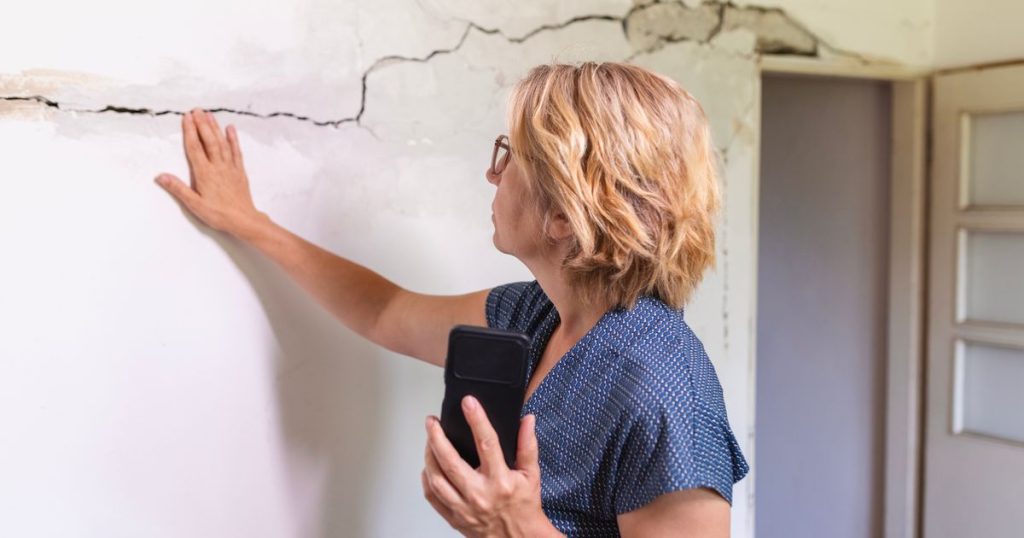Understanding Wall Cracks: When to Worry and When Not To
As homes age, wall cracks inevitably appear, leaving many homeowners wondering whether these cracks are a sign of underlying structural issues or just a normal part of a home’s settling process. The key is distinguishing between benign cracks and those that signal potential problems. Experts like Katie Whitaker and Melissa Coon offer valuable insights to help homeowners make informed decisions.
Hairline Cracks: The Usual Suspects
Hairline cracks in drywall are a common occurrence, often appearing due to temperature changes or the natural settling of a home. These cracks, typically no wider than a credit card, usually follow the seams of the drywall and are generally not a cause for concern. Whitaker explains that such cracks often result from insufficient mud during construction or products not setting properly. A quick test to determine if you have drywall is to knock on the wall; a hollow sound confirms it. In contrast, plaster walls produce a more solid sound. For those living in areas with drastic temperature fluctuations, like New York City apartments, these cracks may appear more frequently but remain minor issues.
Horizontal and Diagonal Cracks: Causes for Concern
While hairline cracks are often harmless, horizontal or diagonal cracks warrant attention, especially if accompanied by other signs of structural issues. These cracks in drywall can indicate uneven pressure distribution or improper support. Whitaker warns that horizontal cracks, in particular, may signal structural problems, as they don’t align with typical drywall seams. Homeowners should monitor these cracks for growth and watch for additional signs like sloping floors or difficulty opening doors and windows, which could indicate foundation or framing movement. Consulting a professional is crucial if multiple factors arise, as they may signify worsening issues.
The Role of Foundation Cracks
Foundation cracks, whether in a concrete-slab or crawl-space foundation, can be particularly alarming. Horizontal or V-shaped cracks that widen or appear in visible areas like basements may indicate severe structural problems. Coon advises that horizontal cracks in foundation walls are often a red flag for compromised structural integrity. V-shaped cracks, wider on one side, suggest uneven pressure. In such cases, contacting a structural engineer is essential to assess the home’s safety and prevent potential collapse.
A Holistic Approach to Monitoring Cracks
Experts emphasize the importance of a comprehensive approach when evaluating cracks. While cracks provide clues, they don’t tell the whole story. Homeowners should consider factors like drainage, as poor drainage can exacerbate structural issues. Recurring cracks that reappear after repair are a sign of ongoing movement, necessitating further investigation. Monitoring drainage systems and the surrounding landscape can help identify contributing factors to structural problems.
Next Steps: Knowing When to Act
When encountering concerning cracks, consulting a trusted home repair professional or general contractor is a good first step. These experts can assess the situation and provide guidance. Sharing the crack’s history, including any recent leaks or appearances in other areas, aids in accurate evaluation. In severe cases, especially with foundation cracks, involving a structural engineer ensures a thorough assessment, potentially preventing major issues down the line.
Conclusion: Vigilance is Key
While most wall cracks are minor, recognizing the signs of structural issues is crucial for maintaining a home’s integrity. Homeowners should remain vigilant, monitoring cracks for changes and understanding when to seek professional help. By staying informed and proactive, homeowners can address potential problems early, ensuring their home remains safe and stable for years to come.














